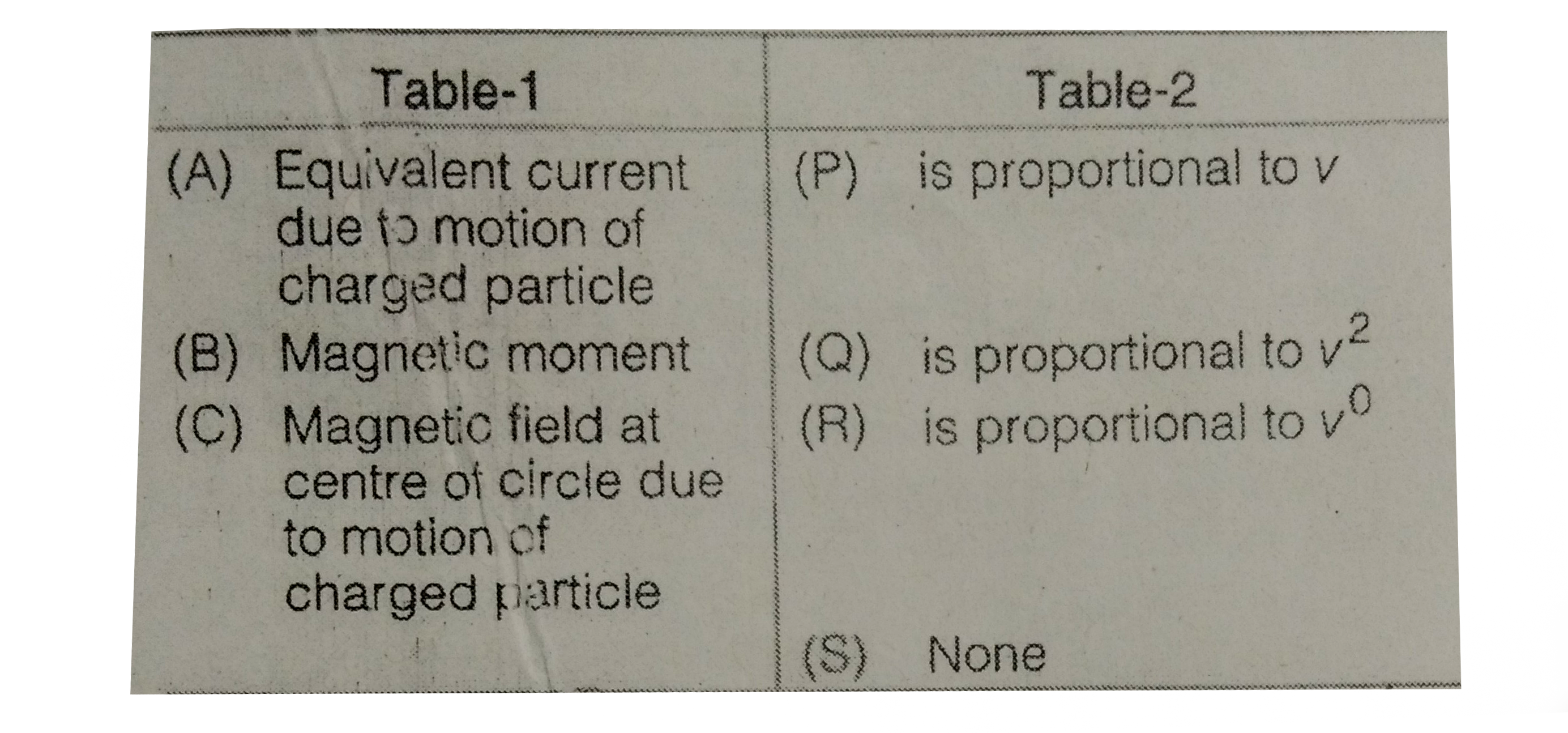Assertion: The energy of charged particle moving in uniform magnetic field does not change.
Reason: Work done by magnetic field on the charge is zero.
If both assertion and reason are true and reason is the correct explanation of assertion.
If both assertion and reason are true but reason is the correct explanation of assertion.
If assertion is true but reason is false
If both assertion and reason are false.
The correct Answer is:A
To analyze the given assertion and reason, we will follow these steps:
Step 1: Understand the Assertion
The assertion states that "The energy of a charged particle moving in a uniform magnetic field does not change."
Step 2: Understand the Reason
The reason provided is that "Work done by the magnetic field on the charge is zero."
Step 3: Analyze the Force on a Charged Particle
When a charged particle moves in a magnetic field, it experiences a magnetic force given by the equation:
F=q(v×B)
where:
- q is the charge,
- v is the velocity vector of the charged particle,
- B is the magnetic field vector.
Step 4: Determine the Direction of the Force
The force F is always perpendicular to both the velocity v and the magnetic field B. This means that the magnetic force does not do any work on the charged particle.
Step 5: Calculate Work Done
The work done W by a force is given by:
W=F⋅dS=F⋅dS⋅cos(θ)
Since the angle θ between the force and the displacement is 90 degrees (as the force is perpendicular to the direction of motion), we have:
W=F⋅dS⋅cos(90∘)=0
Step 6: Conclusion on Energy Change
Since no work is done on the charged particle, its kinetic energy remains constant. Thus, the assertion is true.
Step 7: Evaluate the Reason
Since the reason correctly explains why the energy of the charged particle does not change, we conclude that both the assertion and the reason are true, and the reason is the correct explanation for the assertion.
Final Answer
Both the assertion and reason are true, and the reason is the correct explanation of the assertion. Therefore, the correct option is:
Option 1: Both assertion and reason are true, and reason is the correct explanation of assertion.
---
The assertion states that "The energy of a charged particle moving in a uniform magnetic field does not change."
The reason provided is that "Work done by the magnetic field on the charge is zero."
When a charged particle moves in a magnetic field, it experiences a magnetic force given by the equation:
F=q(v×B)
where:
- q is the charge,
- v is the velocity vector of the charged particle,
- B is the magnetic field vector.
The force F is always perpendicular to both the velocity v and the magnetic field B. This means that the magnetic force does not do any work on the charged particle.
The work done W by a force is given by:
W=F⋅dS=F⋅dS⋅cos(θ)
Since the angle θ between the force and the displacement is 90 degrees (as the force is perpendicular to the direction of motion), we have:
W=F⋅dS⋅cos(90∘)=0
Since no work is done on the charged particle, its kinetic energy remains constant. Thus, the assertion is true.
Since the reason correctly explains why the energy of the charged particle does not change, we conclude that both the assertion and the reason are true, and the reason is the correct explanation for the assertion.
Both the assertion and reason are true, and the reason is the correct explanation of the assertion. Therefore, the correct option is:
Option 1: Both assertion and reason are true, and reason is the correct explanation of assertion.
Topper's Solved these Questions
- BOOK - NCERT FINGERTPS ENGLISHCHAPTER - MOVING CHARGES AND MAGNETISM EXERCISE - Magnetic Force15videos
MOVING CHARGES AND MAGNETISM
- BOOK - NCERT FINGERTPS ENGLISHCHAPTER - MOVING CHARGES AND MAGNETISM EXERCISE - Motion In Magnetic Field6videos
MOVING CHARGES AND MAGNETISM
- BOOK - NCERT FINGERTPS ENGLISHCHAPTER - MOVING CHARGES AND MAGNETISM EXERCISE - EXEMPLAR PROBLEMS6videos
MOVING CHARGES AND MAGNETISM
- BOOK - NCERT FINGERTPS ENGLISHCHAPTER - MAGNETISM AND MATTER EXERCISE - NCERT Exemplar5videos
MAGNETISM AND MATTER
- BOOK - NCERT FINGERTPS ENGLISHCHAPTER - NUCLEIEXERCISE - Assertion And Reason15videos
NUCLEI
Similar Questions
The energy of a charged particle moving in uniform magnetic field does not change-Explain.
View SolutionThe path of a charged particle moving in a uniform steady magnetic field cannot be a
View SolutionA charged particle moves in a uniform magnetic field B=(2ˆi−3ˆj) T
View SolutionWhen a charged particle enters a uniform magnetic field its kinetic energy
View SolutionA charged particle moving in a magnetic field experiences a resultant force
View SolutionIf a charged particle enters perpendicular in the uniform magnetic field then
View SolutionAssertion In non-uniform magnetic field speed of a charged particle varies.
Reason Work done by magnetic force on a charged particle is always zero.View SolutionThe change in the kinetic energy of a charged particle moving in a uniform magnetic field will be zero when its velocity is
View SolutionThe path of a charged particle in a uniform magnetic field, when the velocity and the magnetic field are perpendicular to each other is a
View SolutionA charged particle is moving in a circular path in uniform magnetic field. Match the following.
 View Solution
View Solution

